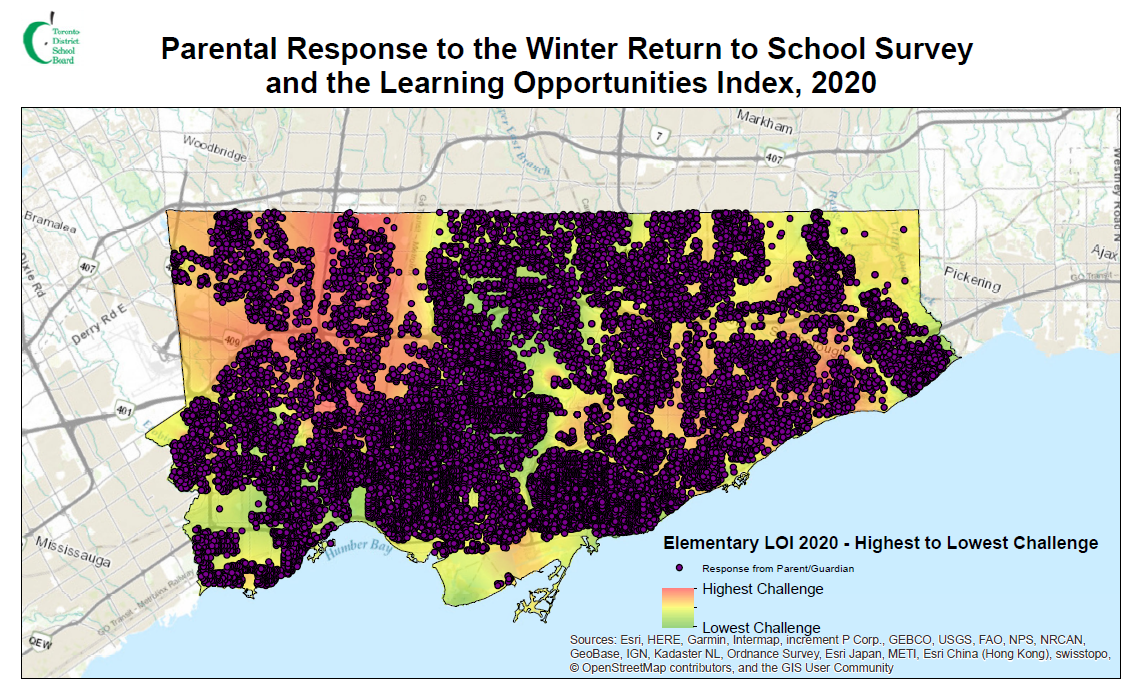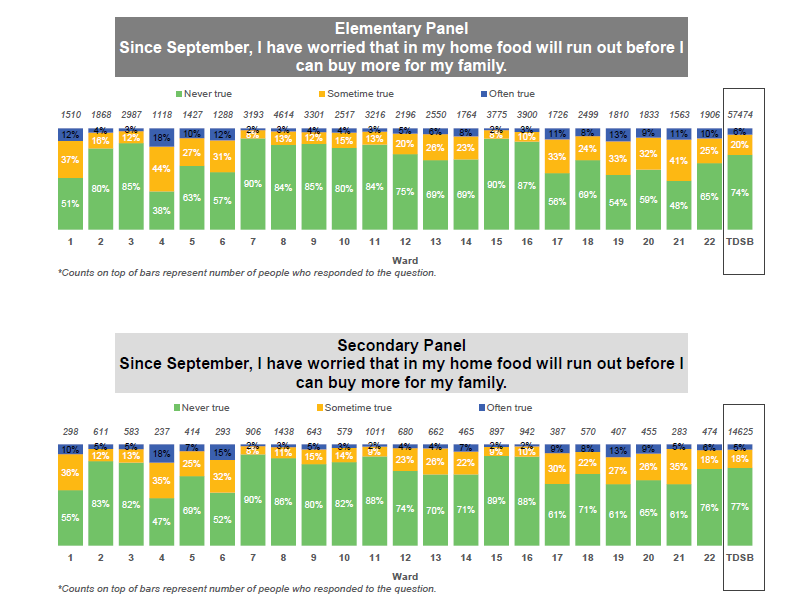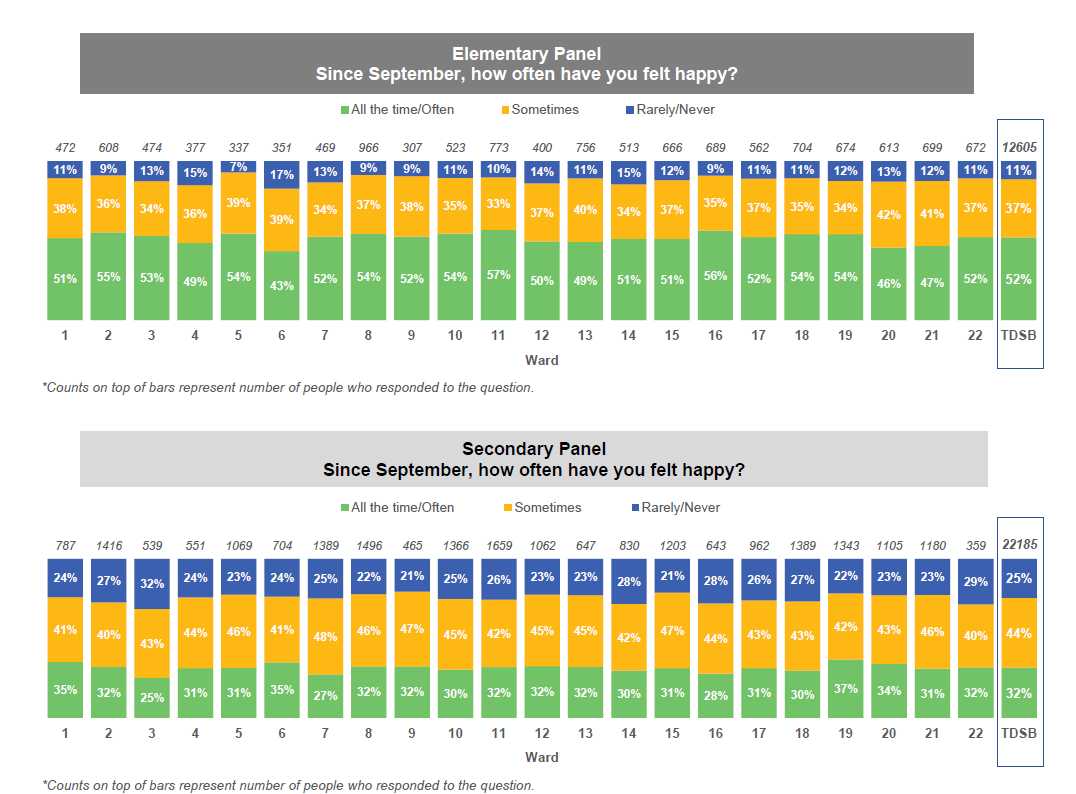In late January 2021, students in Grades 6 to 12 were invited to complete an online survey about their mental health and well-being, support and relationships, and learning experiences during the current school year. Parents also completed a similar survey - parent representation spanned across the city reaching most neighbourhoods.
Final results from the student and parent survey were aggregated by ward.

Parent Highlights, By Ward and TDSB Overall
Families Mental Health and Well-being
Across the TDSB, families with elementary children report more difficulties managing and coping than families with secondary children. Approximately 1 in 10 elementary families report not managing or coping well (prior to January 2021).
When we examine food insecurity across wards, there are significant differences between wards. When combining elementary and secondary families, 8 out of 22 wards have at least 10% of families often worrying about food insecurity (since September 2020). In instances where there are higher percentages of families reporting worries about food insecurity, results from the student survey show higher percentages of racialized communities.

Student Learning
Overall, secondary families were slightly more likely (73%) to report that their child will be ready for the next grade level. Elementary families were less likely (69%) to report the same. There are slight differences between wards.
Secondary students (69%) are slightly more likely to report feeling worried about falling behind because of COVID-19 than elementary students (59%). Again, there are slight differences between wards.
84% of both elementary and secondary students agree that they learn better in-person compared to virtual learning. This is consistent across wards.
Student Mental Health and Well-being
Students across the system are struggling with mental health and well-being this year. This struggle is more pronounced in secondary school. Elementary students report feeling happy (all the time or often) 20% more then secondary students. Overall, the percentage of students reporting feeling happy has decreased by 20% compared to pre-COVID-19 data points (Student Census, 2017).

Please click here for full reports: